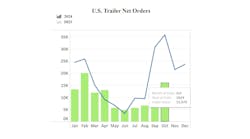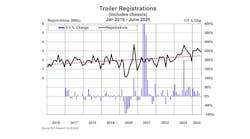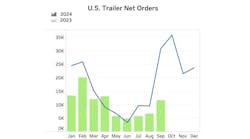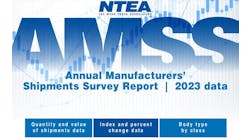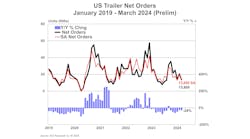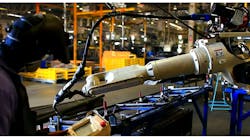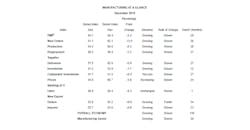Economic activity in the manufacturing sector expanded in December, and the overall economy grew for the 116th consecutive month, the nation’s supply executives said in the latest Manufacturing ISM Report On Business.
“Comments from the panel reflect continued expanding business strength, but at much lower levels,” said Timothy R. Fiore, chair of the ISM Business Survey. “Demand softened, with the New Orders Index retreating to recent low levels, the Customers’ Inventories Index remaining too low—a positive heading into the first quarter of 2019—and the Backlog of Orders declining to a zero-expansion level.
“Consumption continued to strengthen, with production and employment still expanding, but at much lower levels compared to prior periods. Inputs—expressed as supplier deliveries, inventories and imports—softened as well, with suppliers improving delivery performance, and inventories and imports declining.”
The December PMI registered 54.1%, a decrease of 5.2 percentage points from the November reading of 59.3%.
Other highlights from the report:
- The New Orders Index registered 51.1%, compared to the October reading of 62.1%.
- The Production Index registered 54.3%, compared to the October reading of 60.6%.
- The Employment Index registered 56.2%, compared to the October reading of 58.4%.
- The Supplier Deliveries Index registered 57.5%, compared to the October reading of 62.5%.
- The Inventories Index registered 51.2%, compared to the October reading of 52.9%.
- The Prices Index registered 54.9%, compared to the October reading of 60.7%, indicating higher raw materials prices for the 34th consecutive month.
Also, exports continue to expand but at low levels consistent with November, and price increases relaxed to levels not seen since June 2017, when the index registered 53%.
The machinery, transportation equipment and primary metals industries were among 11 reporting growth in December. Fabricated metal products reported contraction.
“The manufacturing community continues to expand, but at much lower levels and at a sharp decline from November,” Fiore said.
Here are some selected comments from respondents:
-- “Growth appears to have stopped. Resources still focused on re-sourcing for U.S. tariff mitigation out of China.” (Computer & Electronic Products)
-- “Brexit has become a problem due to labeling changes.” (Chemical Products)
-- “Customer demand continues to decrease [due to] concerns about the economy and tariffs.” (Transportation Equipment)
-- “Starting to see more and more inflationary increases for raw materials. Also, suppliers [are] forcing price increases due to tariffs.” (Food, Beverage & Tobacco Products)
-- “The ongoing open issues with tariffs between U.S. and China are causing longer-term concerns about costs and sourcing strategies for our manufacturing operations. We were anticipating more clarity [regarding] tariffs at the end of 2018.” (Machinery)
-- “Business is steady, but pace of incoming orders are slowing.” (Furniture & Related Products)
-- “Business is robust for certain sectors [aerospace] and flat to downward for others [energy]. Tariffs continue to impact business direction and profit.” (Miscellaneous Manufacturing)
-- “Caution seems to be the outlook. Are we in a correction, or is the market getting ready to slow over time?” (Fabricated Metal Products)
-- “No major change in business operations towards the end of 2018; however, we are carefully monitoring oil prices and outside influence from market conditions to better understand our 2019 outlook and capital plans.” (Petroleum & Coal Products)
-- “Customers are hedge buying in December as a result of announced price increases starting in January.” (Textile Mills)

